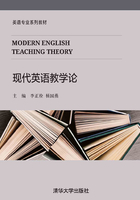
Settings in Experiential Learning
The Experiential Learning refers to a spectrum of practices in different settings from different walks of life. The techniques and applications of Experiential Learning are relevant to the challenges that people face in their personal lives, in education, in institutional development, in business life, in communities, and in society change. These settings entail different emphases on and goals for Experiential Learning. Kohonen, et al., in their Experiential Learning in Foreign Language Education, make a distinction between four settings in Experiential Learning:
1. Assessment and accrediting of prior learning in adult education is concerned with the problems of assessing and accrediting learning from prior work experience. A central question in accreditation is how to make valid and fair judgments about prior learning as a basis for creating new routes into higher education, employment and training opportunities, and achieving professional status. The focus is on the outcomes of prior learning in terms of what counts as evidence for learning. There are several techniques which can be used in the assessment of prior learning. These include various performance measures, with competence checklists, discussions, tests and examinations for the learning outcomes. Portfolio assessment is another flexible instrument which can be used for reporting learning outcomes.
2. Pedagogical change in formal education concerns the learning processes in various institutional settings, from early learning to adult education, and the role of prior learning as a resource for further learning. Learning needs to be related to the learner’s prior experiences which are activated for conscious access. Experiential techniques can be incorporated in traditional classroom and course work. The techniques include combinations of independent study, contract learning and project work, shared reflection, role plays, simulations, field trips and problem-based learning. The experiential techniques are aimed at increasing the participants’involvement in their own learning by engaging their full attention in the process and increasing their control over their experiences. The techniques also emphasize the relevance of learning with regard to the world outside the classroom. Experiential Learning thus serves as a link between formal learning, work experience and personal development.
3. Social change and community action uses learning from experience as a means for group consciousness raising, community action and social change. Individual experience is connected with the power-relations in society. Individuals are encouraged to make links between their autobiography, group history and social and political processes. The techniques include personal reflection and various forms of group discussions and group projects utilizing the diversity in the participants’experiential and social backgrounds. The variety of views stimulates understanding, empathy and attitude changes and helps people recognize the dominant assumptions or ideologies in society.
4. Personal growth and development focuses on individual and interpersonal experiencing and thus affective learning. It is aimed at increasing personal and group effectiveness, autonomy, choice and self-fulfillment. These goals are usually explored in various group processes using stories, narratives, autobiographies, diaries and visuals (e.g. video, films) as inputs. Other techniques include the use of drama, guided imaging and visualizations, and creative arts approaches such as meditation, movement and drawing. Refection on prior and the “here and now” experiences provides the basis for insights and change. The experiential techniques foster empathy, risk-taking, feedback and constructive conflict resolution.
(Kohonen et al., 2001: 32-33, with slight change)